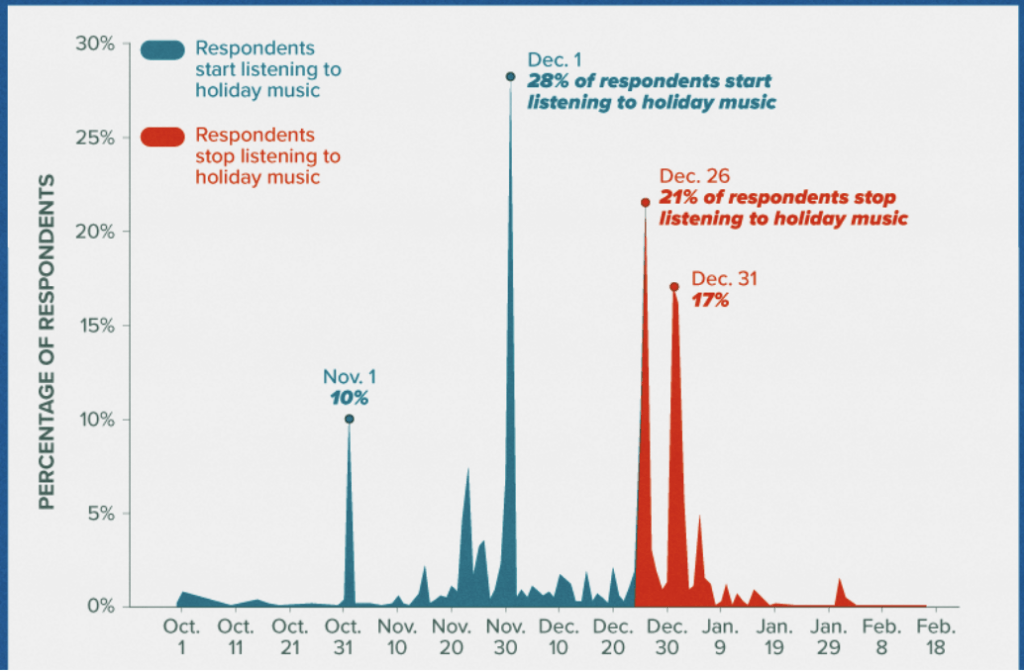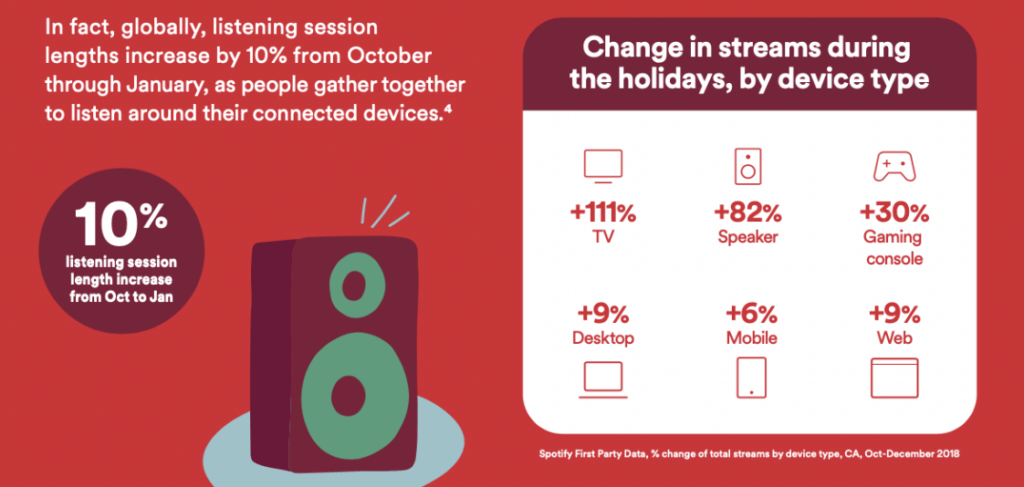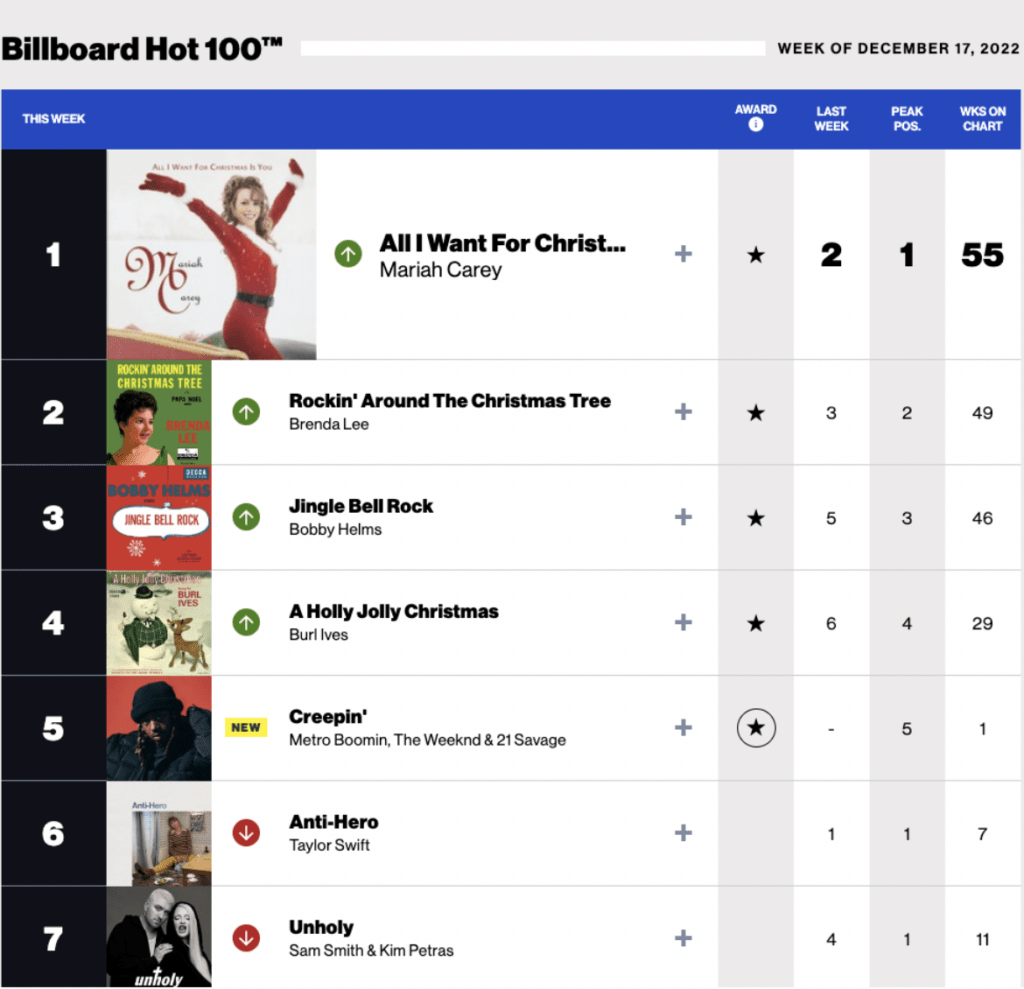As the holidays approach, an annual ritual begins: the rise of holiday music. From Christmas radio programming to the festive playlists that light up our devices, the familiar sounds of the season take centre stage, setting the mood for millions around the world. Yet beyond the cheerful melodies and timeless classics lies a thriving and complex industry. The holiday music business is a well-oiled machine – one that artists must learn to navigate if they hope to enjoy a piece of the lucrative pie.
In this article, we unwrap the opportunities and challenges of the holiday music industry, exploring its impact on streaming, the charts, listener behaviour, release strategies, and more.

Sleigh Bells Ring, Are You Listening?
It’s no secret that Christmas music is widely popular across the world, reaching listeners of all ages, cultures, and musical preferences, and has only continued to gain momentum over the years. Of course we can assume that its feel-good lyrics, joyful melodies, and nostalgic sentiment play a large part in the popularity of holiday music, but it’s more than that. As the festive season approaches, listener behaviour changes.
According to Spotify, people living in Canada and the U.S. start tuning in to holiday music as soon as early November. Other places in the world, such as the Philippines, begin as early as September! We also start seeing a shift in how people consume their music, from more solo listening (think in the car, at work, at the gym) to more communal listening (through connected TVs, smart speakers, and gaming consoles). Notably, there’s an increase in consumption across all device types, as well as a 10% rise in listening session length between the months of October and January. Even factors such as drops in temperature, snowfalls, and longer nights all contribute to an uptick in music consumption, according to a study by The Economist.

Streaming All The Way
While radio and album sales also see a boost around this time, the continued growth of the holiday music business over the last several years is largely thanks to the upsurge in streaming. Mood-based listening and holiday-themed playlists are big contributors to the increase in consumption, providing opportunities for independent or lesser known artists to gain visibility as well.
In fact, even non-holiday mood-based playlists get a significant lift during this period – from October to December 2018, streams of Spotify’s “romantic” playlists saw a 123% jump, along with rises for other moods like “easygoing” and “lively”. In 2020, Spotify noted increases in streams tied to “Dinner and Cooking moments” (24%), as well as non-holiday classical music (16%).
What does this mean for artists? It means that streaming has opened a door for you to enter the holiday music scene, as well as benefit from its booming business even with non-festive music releases. It’s something to think about when you are deciding whether it’s the right time to drop your track: ask yourself if your song could fall under any potentially holiday-adjacent themes. It may not be a Christmas tune, but is it “cozy”? Then there might just be a playlist out there for it.
Tip: When pitching your new song to playlist editors, e.g. on the Spotify for Artists platform, keep in mind how it could be marketed for the holiday fever to work in your favour.

Classics vs. Newbies
Artists may assume that it is nearly impossible to break through the holiday music barrier built by classics such as Bing Crosby’s White Christmas and fan favourites like Mariah Carey’s All I Want for Christmas is You, but that’s not necessarily true. While those hits may hold on to the top spots of playlists, charts, and radio programming alike, there is still room for newcomers.
According to an analysis of a Nielsen Music 360 report, it is actually a myth that people only want to listen to the classics. Their data shows that preferences for both the classics and contemporary songs are prevalent across various types of consumption, including sales, streaming, and radio. They also debunk another myth: that only older generations are big holiday music fans due to the fact that many of the most beloved Christmas tunes are from the 50s and 60s. Nielsen’s report proves that is untrue – people of all ages enjoy it, especially Millennials.
While gaining traction on a Christmas original is a feasible option, it can’t be denied that a more pragmatic approach to breaking into the holiday market is with covers of well-known favourites. Instrumental, an analytics company that specializes in music trends, claims that even artists without a major label can gather millions of streams by getting on the right playlist with a simple acoustic cover or jazz instrumental.
It’s also important to mention that many Christmas classics are now part of the public domain – meaning the copyright has expired – which can make it even more appealing for artists to release covers.
Tip: Be sure to do your research – while one particular version of a song may be in the public domain, there could still be other arrangements of that song that are protected under copyright.
Come All Ye Faithful
Despite the seasonal nature of it, holiday music can be a fruitful endeavour for music creators. Unlike other music, the benefit of releasing holiday tunes is that, each year, listeners are actively seeking it out, consuming it at a higher volume, and then coming back again for more. Sure, it may only be heard a couple of months out of the year, but the time in between is what gives it that renewed sense of novelty each holiday season. A Christmas hit is one of the surest ways to solidify an evergreen audience. “My listenership on streaming goes very high around this time of year, since having my first Christmas song out four years ago,” claims jazz-pop singer-songwriter Jamie Cullum in an interview with The Guardian.
The same applies to the charts as well: “If you look at the Billboard Hot 100 in any given week, it’s a series of entries that are constantly changing and being replaced by new releases. That’s the way that the music charts work,” explains USC’s Thornton School of Music professor Nate Sloan in an interview with Marketplace. “Except in December, when all of a sudden songs from 1934 start to appear alongside Justin Bieber’s latest single.”

It’s no wonder that most artists have released at least one Christmas single over their career, if not an entire album. Holiday music is undeniably a revenue booster and audience builder, no matter how saturated the market may seem.
Other Considerations
As the end of the year approaches, things get even busier for the music industry. In addition to all the usual preparations required for any music release, it’s crucial to plan very far in advance when releasing holiday music. Because the season only lasts a couple of months, artists should strive to drop their tracks by early November at the latest to take full advantage of the short annual lifespan. This means lining up campaigns and pitching for placements by early fall or sooner – music selections for holiday commercials, movies, TV specials, and promos often have deadlines as early as summer. So yes, it is normal to be planning for and recording holiday tunes during the spring! The more lead time, the better chances of success.
Fun fact: Getting a Christmas song into a TV or film can be game changing – that’s how many holiday hits first catapulted to fame or regained popularity. Be sure to check out our article on sync licensing here.
While Christmas may be the most prevalent topic in music during this time of year, there are of course other seasonal holidays that you can create music for, such as Hanukkah and Kwanzaa. Also, as mentioned earlier, it is not unheard of to release non-holiday music towards the end of the year – though if it’s really far removed from the general vibe of the season, it will likely be that much harder to break through the noise. Better off waiting until the new year!
Written by Andria Piperni
Illustration by Holly Li





















